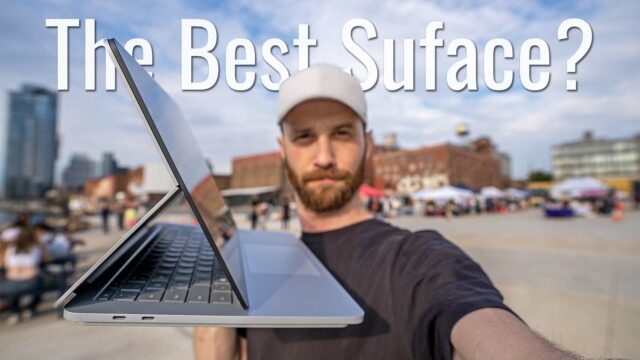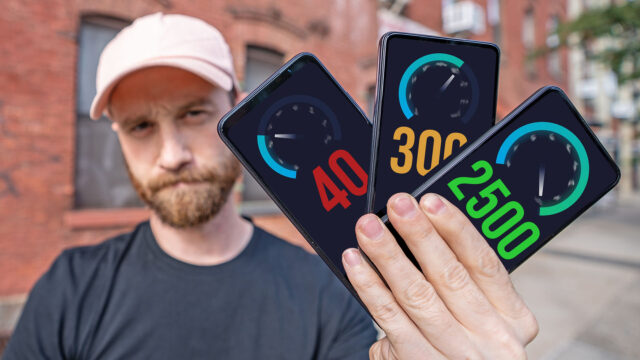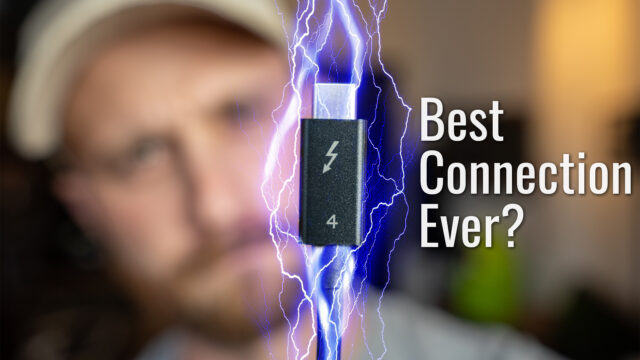Huawei Matebook X Pro (2019) Complete Walkthrough: Still One of the Best Laptops You Can Buy
One of my favorite laptops last year was easily the Huawei Matebook X Pro. It had a decent GPU and specs, it was made out of proper feeling materials, looked slick, was light, and the price was amazing for what you got.
Now, here at Mobile World Congress in Barcelona, I’m stoked to try out the sequel.
This is the Huawei Matebook X Pro (2019) and Huawei gave me some time with it so I figured I’d try and do a complete walkthrough for you guys on it.
If you’re not familiar, a complete walkthrough on this site is where I try and go through every feature I can so you guys are better prepared should you be in the market to go buy one.
With that said, there’s a lot to go through, so let’s get started with the styling.
Just like with last year, we have a unibody metal design, but the logo has been toned down from the name Huawei and the peacock/flower thing to just the name Huawei (which I think looks cleaner frankly). Also, like last year, it’ll come in Mystic Silver or Space Gray.
On the other side of that lid, we have a 13.9″ 3000×2000 3:2 aspect ratio touchscreen that can apparently achieve an improved 450 nits of brightness and 1500:1 contrast ratio.
We also have some seriously tiny bezels giving it a 91% screen-to-body ratio. To achieve this though, Huawei again moved the webcam from above the screen to a hidden location inside a popup key in the keyboard.
I praised this last year for the fact that Huawei was at least innovating, it helped with privacy concerns for those that cover their webcam with a sticker, and made the screen look impressive. But, the fact is that it’s a very unflattering view for any type of video calling or live streaming you’d plan to do and since it isn’t on the lid, can’t be adjusted.
Curious what a $1000 smartwatch looks like? Here’s my video on the Mont Blanc Summit 2.
Check out the video above for what the webcam looks like and the microphones sound like.
Speaking of that keyboard, it is super clicky and feels great to type on. The backlights in the keys are bright and apparently, Huawei told me it’s spill-proof so the knocked over coffee cup won’t kill it.
On either side of that keyboard, we have four speakers that are Dolby Atmos capable (watch the video above for how they sound).
Above the right speakers, we have a power button that doubles as a fingerprint sensor for Windows Hello to log in to the computer.
For ports, we have a USB-C port that is Thunderbolt 3 capable (so you can plug it into an eGPU or use Thunderbolt 3 devices). We have another USB-C port, one USB 3.0 Type A port, and a 3.5mm audio jack.
As for specs, we have a choice between the 8th gen Intel i7-8565U or the i5-8265U processor, the choice of 8 or 16GBs of RAM, 256GB, 512GB, or 1TB NVMe PCIe SSD, and the new NVIDIA MX250 GPU with 2GBs of GDDR5 memory.
For an even cheaper laptop, check out the Samsung Flash video I did.
So thanks to that discrete GPU, like the last year’s model, it should be able to handle my 4K video editing so long as there aren’t a lot of graphics and animations, and yet have better battery life than the more powerful laptops I sometimes use for editing.
We’ll have to see how it does though against the Razer Blade Stealth 2019 that I currently use though. Subscribe and ding the bell next to the word subscribe to be notified of new videos I do (like that one, coming soon).
For connectivity, we have 802.11ac with 2×2 MIMO (more antennas so it can theoretically reach 1733Mbps speeds in 5GHz). We also have Bluetooth 5.0 on board, as well.
For power, we have 57.4Wh battery that can be charged via the USB-C ports using the 65W charger (by the way, 70W is the limit on airplanes so if you travel a lot like I do, that means this will be able to be plugged in on those long flights which is a big thing for me).
That charger can also power your USB-C phone as it supports Power Delivery protocols so you could just use the one charger for multiple devices.
Check out my Huawei Mate 20 Pro real-world battery test video.
For software, it’s running Windows 10 as we’re used to it, but this year Huawei added a few tricks of their own to it.
Firstly, they’ve added gestures like three-fingers swiping down from off the top of the screen to take screenshots.
Next, they added some features exclusively for people using Huawei phones.
You can use Huawei Share 3.0 on your phone and this laptop to tap the NFC tag to the right of the keyboard and instantly share photos from the phone to the laptop which is pretty cool.
You can also use cross-device copy and paste, and even use the phone to start a screen recording on the computer which is then automatically saved to the phone when you stop recording for easy sharing.
Now, overall, I feel like it’s a solid incremental upgrade to last year’s model. But I’m okay with that really. Mainly because I still think last year’s model is competitive still right now.
It’s sleek, performance is going to be not crazy fast but for the fact this is an ultraportable essentially it’s more than you’d get from most and if it starts at the same $1500 or so then I personally have a hard time being able to suggest any other laptop that’ll give you this much for that price.
Update: The price for the i7 model is, unfortunately, $1999. Still not bad, but not as good as the $1500 of last year’s model. Will be putting them head to head to see if it’s worth it to get the new one or if you should maybe just go for the old one instead.
Follow me on Twitter for pricing once it is released, subscribe to the weekly email newsletter if you want more tech content, and as always, thanks for reading.






















